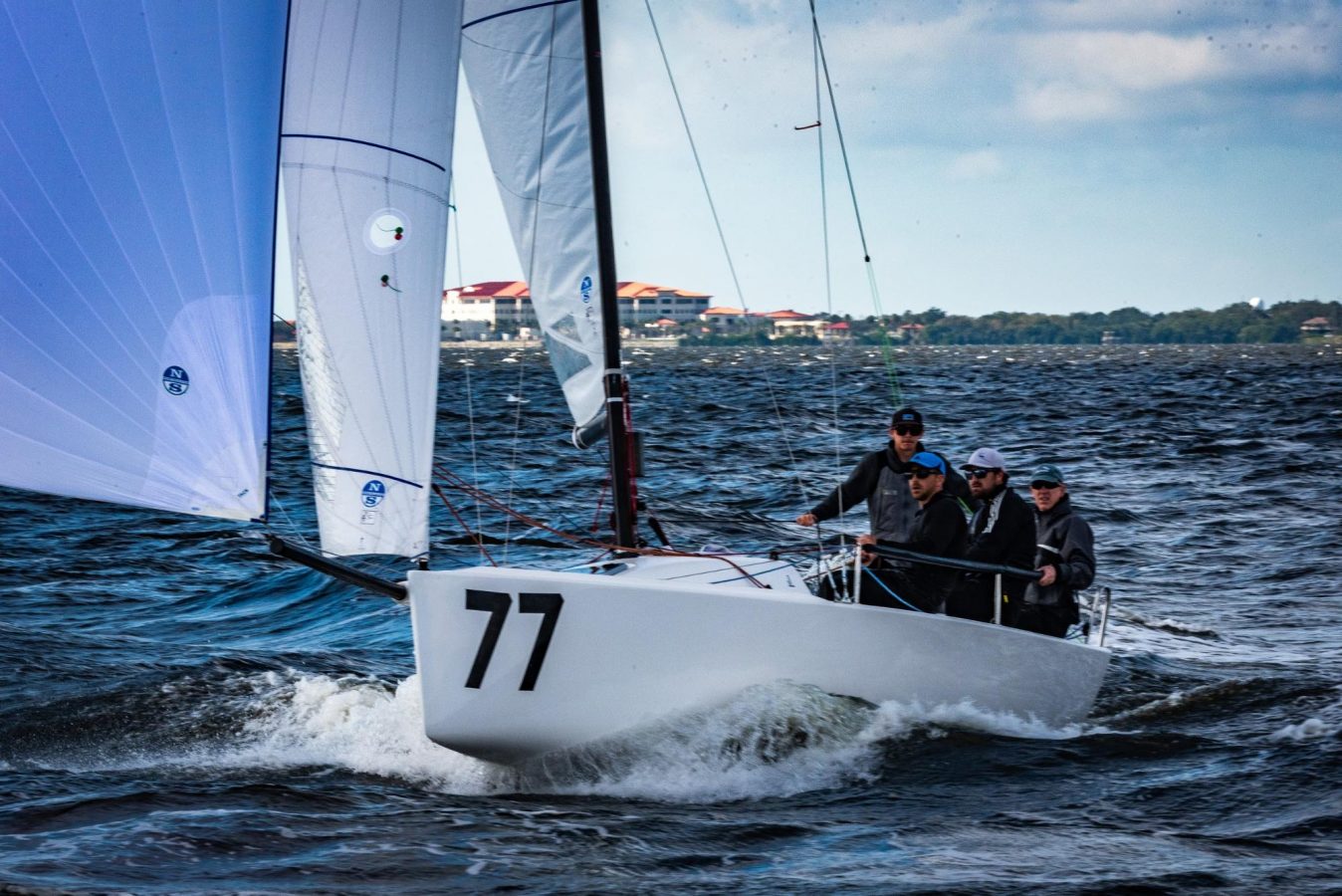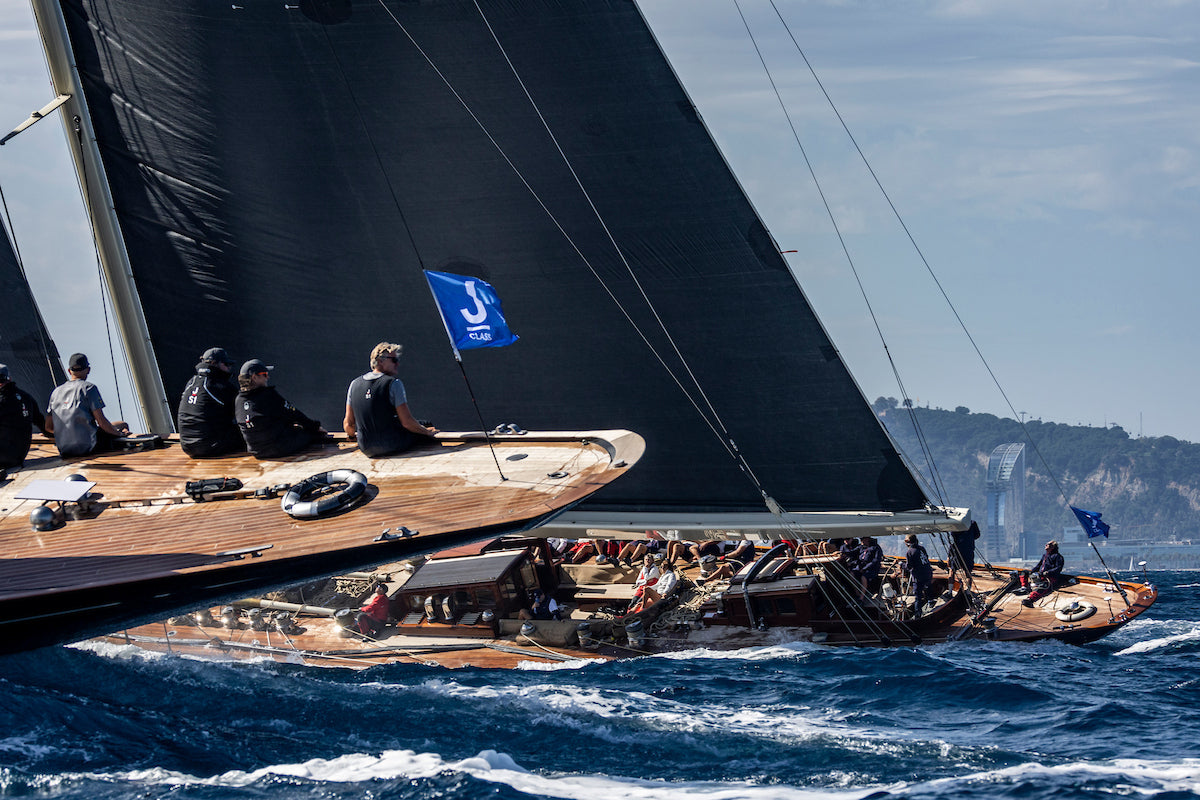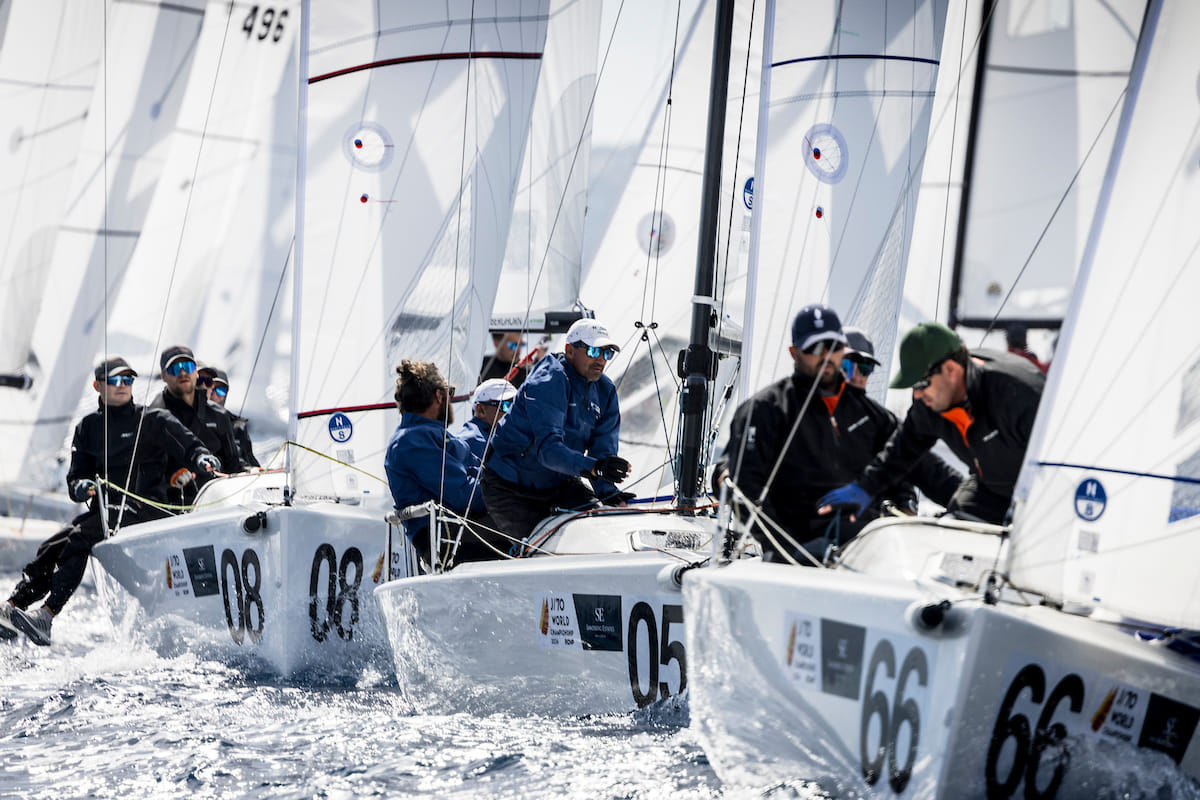DAVIS ISLAND J/70 SERIES: TAKEAWAYS EVENT 2
DAVIS ISLAND J/70 WINTER SERIES EVENT 2
North Experts Tips & Takeaways

Another great weekend at the second event of the 2018-19 J/70 Davis Island Winter Series with fifty-three teams racing in the beautiful waters of Tampa Bay. Congratulations to Joel Ronning on Catapult for winning Event #2. Brian Keane’s Savasana was third overall in the five-race regatta. Tough racing conditions ranged from light and shifty to puffy and shifty, keeping the game close and the battle for the podium even closer. North clients took seven of the top ten spots, with Andrew Fisher’s Button Fly first overall in Corinthian division.
We asked our experts to share some insights from the weekend.
When to Change from Planing to Displacement Mode Downwind?
By Tim Healy
One of the questions that came from sailing this past weekend was: When planing and the breeze drops a bit, when do you commit to displacement mode? The answer is when the boatspeed can no longer average above 9.5 knots, even after heading up for more power. Then it is time to furl the jib, bear off, move crew weight forward, and commit to displacement mode.
At this point you will be going only about 7-8 knots, but your angle is much lower so your VMG is better. You can also consider wing-on-wing mode. This will take you almost dead downwind with a speed of 6-7 knots, depending on the puffs. Wing-on-wing works especially well at bottom of runs when you want to minimize jibes and keep clear of traffic.
Mike Marshall adds:
This weekend, you could save some of the transitions to displacement by chasing the plane a bit more than you normally would. Since the changes in pressure were normally very short, you would lose a bit of VMG by staying on the plane but be back on it again sooner when the next puff came. It translated into a net gain on the downwinds.
Dividing Up the Work
On Saturday, we had the opportunity to sail in some very variable conditions where the peak wind was 16 knots and the lulls were around 8 knots. These variations required frequent sail control adjustments. Something that the top boats do really well is divide up the tasks, making sure that everything is trimmed correctly more of the time. Here’s an upwind example:
- Driver holds the traveler and the tiller
- Mainsail Trimmer holds the mainsheet and the backstay
- Jib Trimmer has the windward jib sheet
- Bow Person has the vang
This allows all controls to be changed at the same time, which is critical to keeping the boat going when the wind changes from 8-16 knots or back down to 8 again.
Pinching the Puffs
By Will Welles
For the flat water sailing out of Davis Island, you can really pinch in the onset of the puffs to help keep the boat under control. Make sure not to pinch too long or after the puff has gone by, so you don’t lose speed. The key is to maintain a constant angle of heel through puffs and lulls. This is done with vang sheeting, playing the weather sheet of the jib, and steering.
| J/70 Davis Island Winter Series – Event 2 | ||
| Powered by North Sails | ||
| 1 | Catapult / Joel Ronning * | |
| 3 | Savasana / Brian Keane | |
| 5 | Dark Horse / Greiner Hobbs | |
| 6 | New Wave / Will Welles | |
| 7 | Polar / Doug Clark | |
| 8 | Black River Racing / Douglas Strebel | |
| 10 | Button Fly / Andrew Fisher – 1st Corinthian! | |
| * Denotes Partial North Sails Inventory | ||
Full results
Learn more about North’s J/70 products.





























